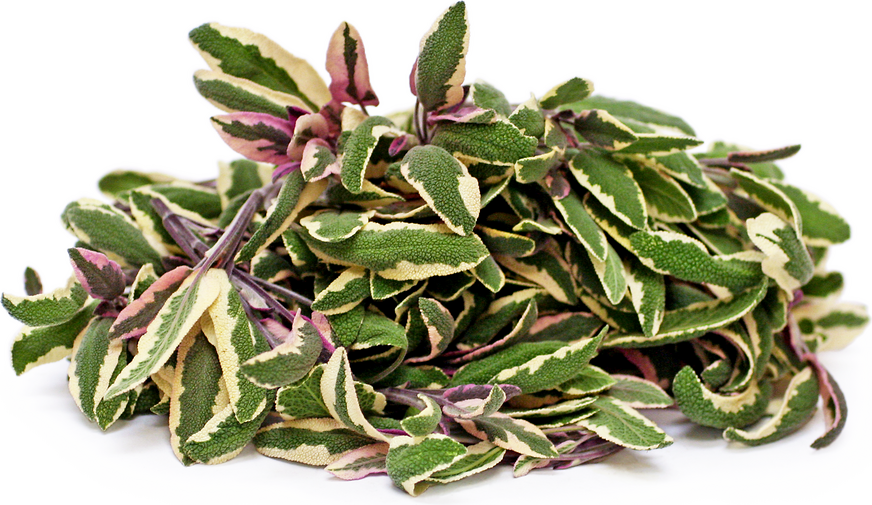


Variegated Sage
Estimated Inventory, lb : 0
Description/Taste
Variegated sage is a bushy herb with woody stems and aromatic multicolored leaves. It can reach heights of one meter tall and produces fragrant purple flowers in the spring. The fuzzy green leaves are marbled and blushed with yellow gold highlights on the margins. They have an earthy spicy aroma with a more subtle flavor than standard sage. It is a slower growing variety, as are most colored varieties of sage, and is slightly more tender than standard sage.
Seasons/Availability
Variegated sage may be found year-round, with peak season in the summer.
Current Facts
Variegated sage is also known as Golden Leaf sage and botanically classified as Salvia officinalis 'Icterina'. It is a small perennial evergreen dwarf shrub in the family Lamiaceae. Its strong aroma is due to the rich oil content in its leaves, a common trait among plants in the family. The herb is grown for its beautiful foliage which is used in culinary applications, herbal medicine and decorative landscaping.
Nutritional Value
Like other sage varieties, Variegated sage contains natural anti-inflammatory, antiseptic, antibacterial and anti-spasmodic properties. It may be ingested as a tea, or used externally in tinctures and essential oil extracts.
Applications
Variegated sage may be used similarly to traditional sage, though it offers a more muted flavor. The stunning foliage also lends it to raw garnish applications, especially when its flowers are in bloom. The herb is often used with strong meaty flavors that enhance its distinct woody characteristics. Pair fresh or dried sage with root vegetables, onion, poultry, liver, sausage, marjoram, thyme, rosemary, garlic, walnuts, pecans, hazelnuts, winter squash, mushrooms, cheeses, apples and cured pork. It may be kept fresh in the refrigerator, or dried and stored in an airtight container.
Ethnic/Cultural Info
Variegated sage, as well as white sage and other varieties, are used to make smudge sticks. A bundle of the dried herbs are burned in religious ceremonies and the smoke is used as a means to cleanse spirits and bring about good health.
Geography/History
There are over 750 known species of sage growing wild and cultivated in temperate climates throughout the world. It is native to the Mediterranean region and was used by both the Ancient Egyptians and Greeks. With importance in both the culinary world as well as in herbal medicine, Sage was entered officially in the United States Pharmacopoeia from 1840 to 1900.




